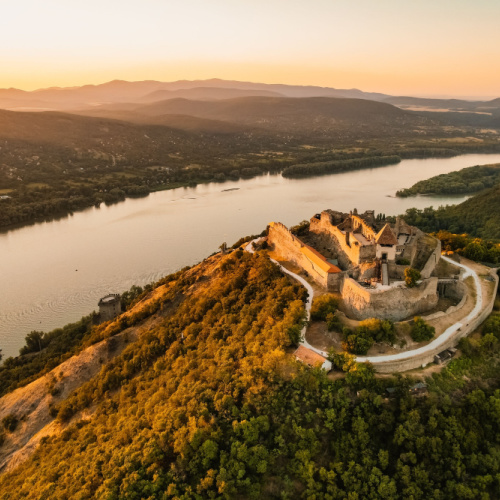
zedspider/Shutterstock
When Is the Best Time to Visit Hungary?
The best time to visit Hungary is during the shoulder seasons of April-May and September-October. During these months, the weather is generally mild and sunny, with fewer crowds and lower prices than during the peak summer season of June-August.
Here are some of the benefits of visiting Hungary during the shoulder seasons:
- Mild weather: Hungary has a temperate continental climate, with warm summers and cold winters. The shoulder seasons offer the best of both worlds, with mild temperatures and less rain than the winter.
- Smaller crowds: The shoulder seasons are less crowded than the peak summer season, so you’ll be able to enjoy Hungary’s popular tourist attractions without having to deal with large crowds. This is especially important if you’re visiting popular destinations like Budapest, Lake Balaton, and Eger.
- Lower prices: Prices for flights, accommodation, and activities are generally lower during the shoulder seasons than during the peak summer season. This means you can save money on your trip without having to sacrifice quality.
Here are some specific examples of how you can enjoy the most of Hungary during the shoulder seasons:
- April-May: The weather in April and May is typically sunny and mild, with occasional showers. This is a great time to visit for sightseeing in Budapest, hiking in the Bükk Mountains, and attending the Budapest Spring Festival in May.
- September-October: The weather in September and October is also typically sunny and mild, with occasional showers. This is a great time to visit for visiting the vineyards of Tokaj, attending the Budapest Wine Festival in September, and celebrating Halloween in Budapest.
While there are many great times to visit Hungary, if you’re looking for the best weather, fewer crowds, and lower prices, then we recommend visiting during the shoulder seasons of April-May and September-October.
 Average Temperatures by Month
Average Temperatures by Month
|
Jan |
Feb |
Mar |
Apr |
May |
Jun |
Jul |
Aug |
Sep |
Oct |
Nov |
Dec |
| Fahrenheit |
32°
|
36°
|
46°
|
58°
|
68°
|
75°
|
80°
|
79°
|
69°
|
58°
|
44°
|
36°
|
| Celsius |
-1°
|
2°
|
8°
|
14°
|
20°
|
24°
|
27°
|
26°
|
21°
|
14°
|
7°
|
2°
|
Climate in Hungary
Summer Season in Hungary
Hungarian summers are warm and sunny, with average temperatures ranging from 25°C to 30°C (77°F to 86°F). This season is ideal for outdoor activities, including exploring the country's historic sites, enjoying its natural thermal baths, and participating in cultural festivals. While summers are generally dry, occasional thunderstorms can bring brief periods of rainfall.
Rainy Season in Hungary
Hungary doesn't have a specific rainy season, but the highest amount of rainfall typically occurs in the spring and early summer months (May to June). The rain is usually not continuous but can be heavy at times, bringing relief to the agricultural lands and natural landscapes. Rainfall during this period can sometimes lead to cooler temperatures and refresh the environment.
Winter Season in Hungary
Winters in Hungary are cold, with temperatures often dropping below freezing. Snowfall is common, particularly in the northern and eastern regions, creating picturesque winter landscapes. The season is characterized by shorter days and is a great time to enjoy Hungary's indoor cultural offerings, such as museums and thermal spas, as well as traditional winter festivals and markets.
Our Recommendations
| Destination |
Jan |
Feb |
Mar |
Apr |
May |
Jun |
Jul |
Aug |
Sep |
Oct |
Nov |
Dec |
| Hungary |
 |
 |
 |
 |
 |
 |
 |
 |
 |
 |
 |
 |






